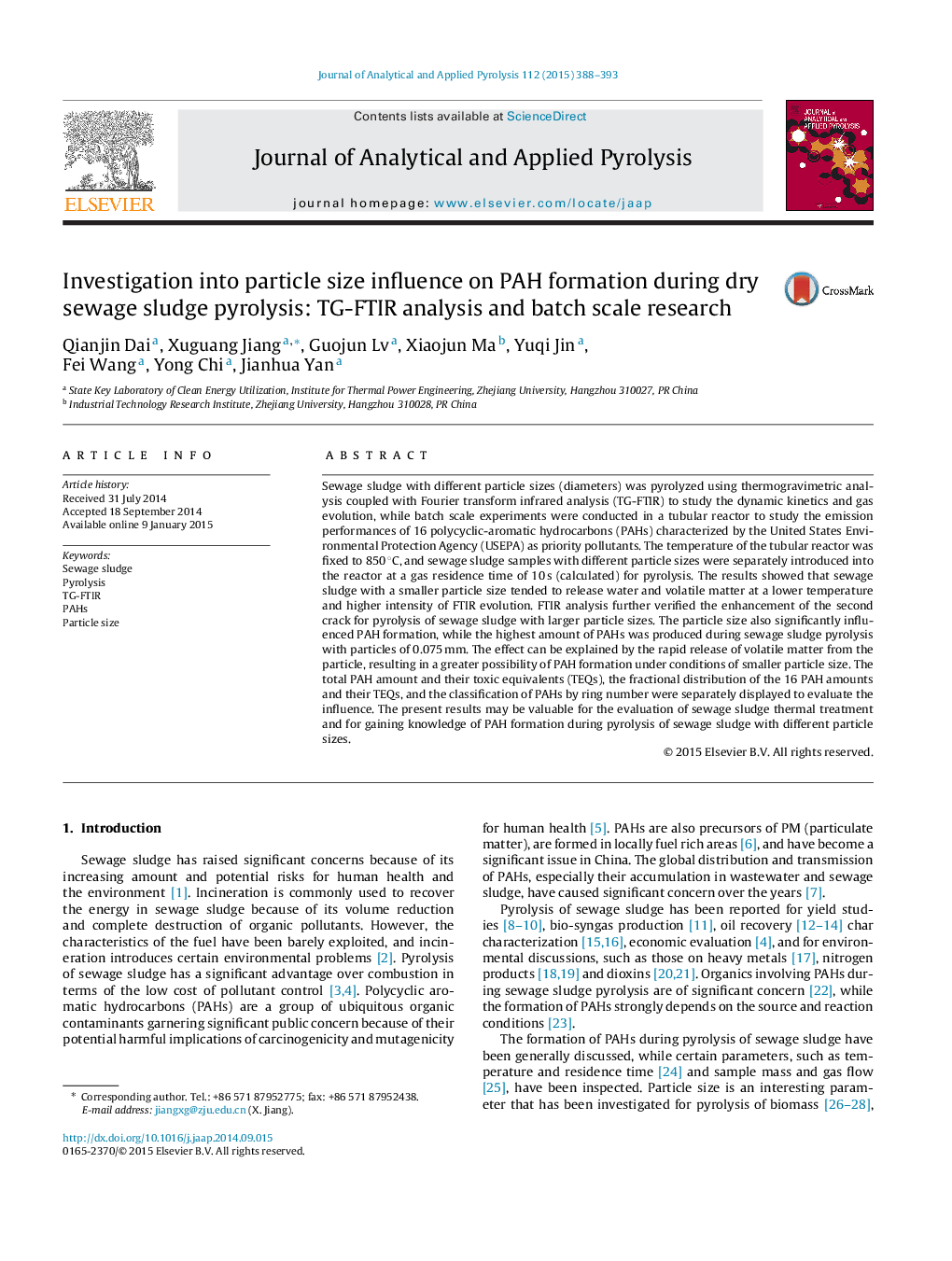| Article ID | Journal | Published Year | Pages | File Type |
|---|---|---|---|---|
| 1197257 | Journal of Analytical and Applied Pyrolysis | 2015 | 6 Pages |
•Analysis method of TG-FTIR and GC/MS were used to investigate pyrolysis.•Bigger particle size put off gas release during sewage sludge pyrolysis.•Reaction of evolving gas with sludge layer was enhanced for bigger particle size.•Smaller particles tended to yield more PAHs due to their incomplete crack.
Sewage sludge with different particle sizes (diameters) was pyrolyzed using thermogravimetric analysis coupled with Fourier transform infrared analysis (TG-FTIR) to study the dynamic kinetics and gas evolution, while batch scale experiments were conducted in a tubular reactor to study the emission performances of 16 polycyclic-aromatic hydrocarbons (PAHs) characterized by the United States Environmental Protection Agency (USEPA) as priority pollutants. The temperature of the tubular reactor was fixed to 850 °C, and sewage sludge samples with different particle sizes were separately introduced into the reactor at a gas residence time of 10 s (calculated) for pyrolysis. The results showed that sewage sludge with a smaller particle size tended to release water and volatile matter at a lower temperature and higher intensity of FTIR evolution. FTIR analysis further verified the enhancement of the second crack for pyrolysis of sewage sludge with larger particle sizes. The particle size also significantly influenced PAH formation, while the highest amount of PAHs was produced during sewage sludge pyrolysis with particles of 0.075 mm. The effect can be explained by the rapid release of volatile matter from the particle, resulting in a greater possibility of PAH formation under conditions of smaller particle size. The total PAH amount and their toxic equivalents (TEQs), the fractional distribution of the 16 PAH amounts and their TEQs, and the classification of PAHs by ring number were separately displayed to evaluate the influence. The present results may be valuable for the evaluation of sewage sludge thermal treatment and for gaining knowledge of PAH formation during pyrolysis of sewage sludge with different particle sizes.
